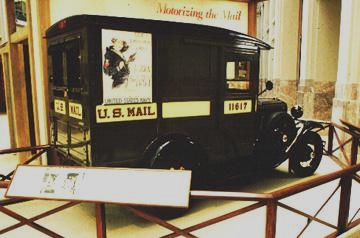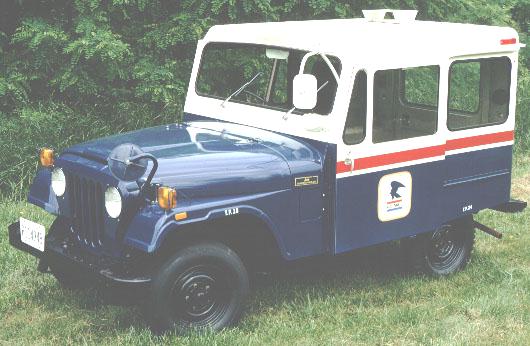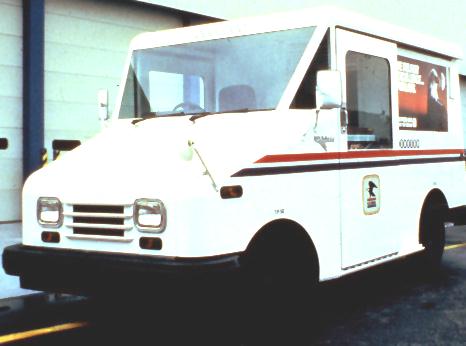WE'VE MOVED!!! THIS PAGE IS NO LONGER UPDATED!!!
Please go there and remember to update your bookmarks.
| Postal Jeeps Begin Service |
 |
As cars and trucks replaced stagecoaches and wagons, the volume of
mail kept on climbing. The introduction of Parcel Post Service in 1913
brought millions of packages into the mail stream for the first time.
In 1931, during the height of the service, the Post Office Department
acquired 1,000 Ford Model AA mail trucks. The body, constructed principally
of oak, was produced by the Metropolitan Body Corporation, while the chassis
was produced by Ford. |
 |
After World War II, the amount of mail delivered to American homes each
day increased so dramatically that letter carriers could no longer rely
solely on pouches and handcarts to carry mail on their daily rounds. In
the late 1950s, the Post Office Department began supplying carriers with
three-wheeled mail vans.
Known as mailsters, these tiny vans were efficient in carrying mail
but uncomfortable and dangerous. Mailsters offered little protection against
cold or damp weather, little traction in good weather, and often no traction
in snow, and poor reliability, for they were constantly breaking down. |
 |
Jeeps were a vital component of the postal service fleet after World
War II. Postal officials, impressed by the performance of jeeps during
the war, decided to harness that strength for mail delivery. These strong,
agile vehicles could stand up to the rigors of delivering the mail in any
terrain or weather. The postal service purchased both left and right-hand
drive jeeps for their carriers.
Unlike previous postal vehicles, which were painted a drab shade of
olive green, jeeps and other vehicles purchased in the 1950s were painted
red, white, and blue. |
 |
Postal officials were determined to standardize the postal fleet. In
the early 1980s after years of study and testing, a new generation of postal
trucks was introduced, nicknamed long-life vehicles. These stocky, somewhat
odd-looking vehicles quickly became familiar sights in American neighborhoods. |
AM General Corporation Background
The history of AM General Corporation can be traced back to 1903,
when Standard Wheel Company, a Terre Haute, Indiana, bicycle maker,
decided to infiltrate the emerging automobile business through its newly
created Overland Automotive Division. The company introduced the
Overland "Runabout" as its first motor vehicle.
Overland was purchased in 1908 by John North Willys, and in 1912 the
Willys-Overland Company was formed. The new company, now
headquartered in Toledo, Ohio, began producing the famous
Willys-Knight series of vehicles and later introduced the "Whippet."
In the 1940s, in support of the war effort, The American Bantam Car Co. designed the
original "Jeep," and Willys-Overland manufactured more than 350,000 of the legendary
4x4 vehicles.
In 1953, Willys-Overland was purchased by Henry J. Kaiser, and the
name was subsequently changed to Kaiser-Jeep Corporation. In 1964,
Kaiser-Jeep added operations in South Bend, Indiana, following the
company's acquisition of a contract from the defunct Studebaker
Corporation to manufacture military trucks.
Purchased by American Motors Corporation in 1970 and renamed Jeep
Corporation, the company then operated two separate units -- the
Commercial Products Division in Toledo and the Government Products
Division in South Bend. In 1971, the Government Products Division
was spun off to become a separate, wholly owned subsidiary of
American Motors known as AM General Corporation.

Home




